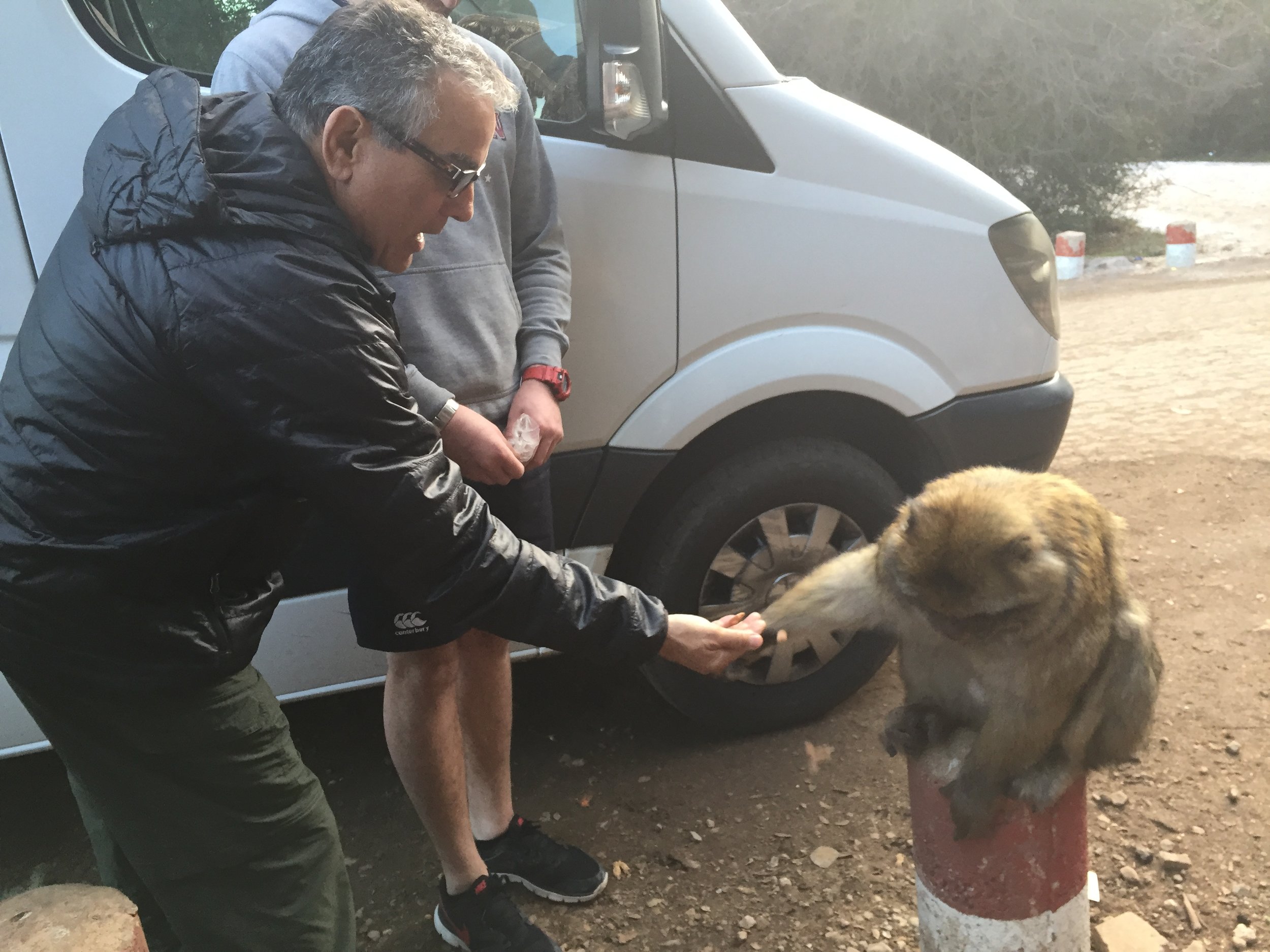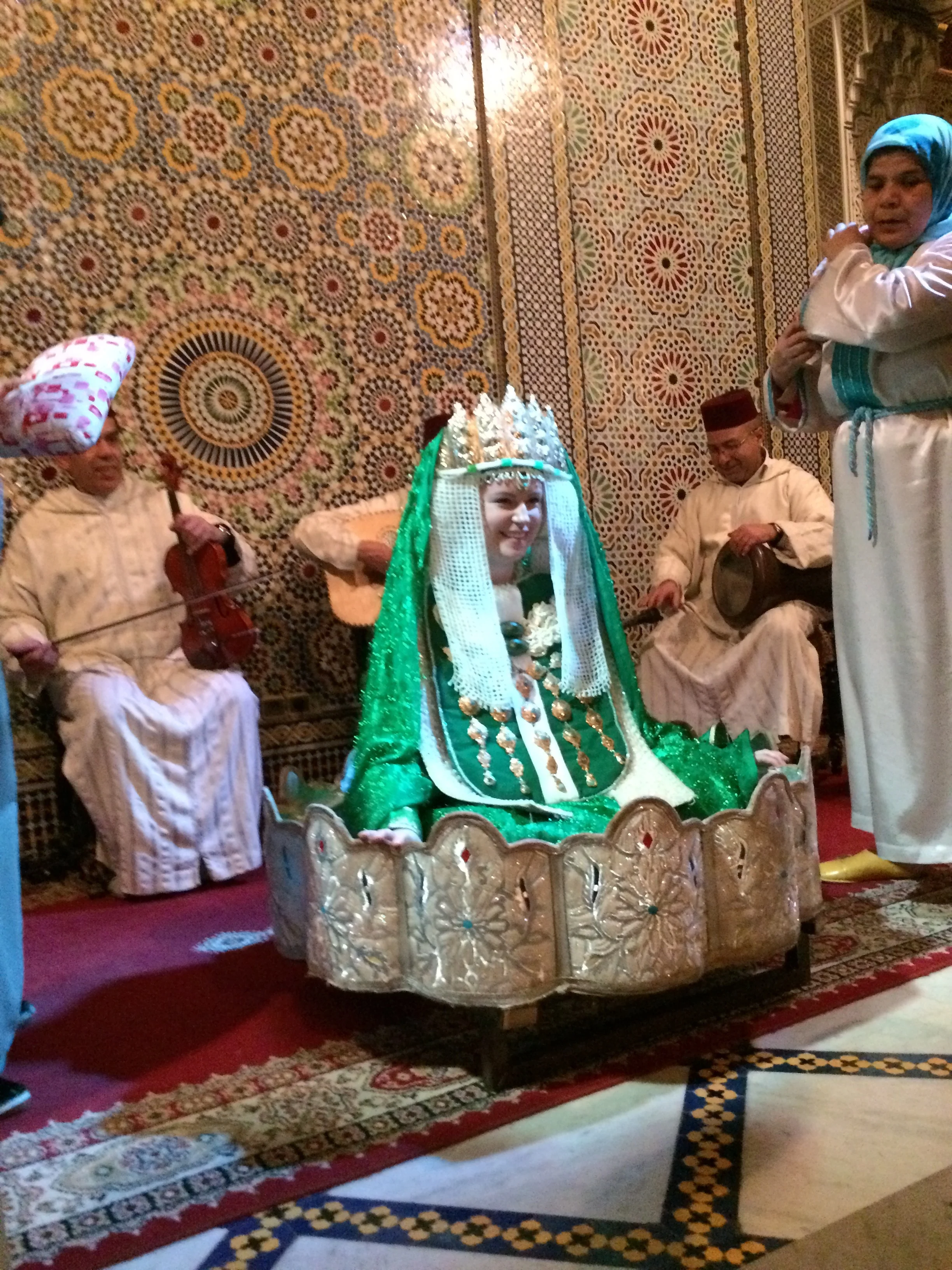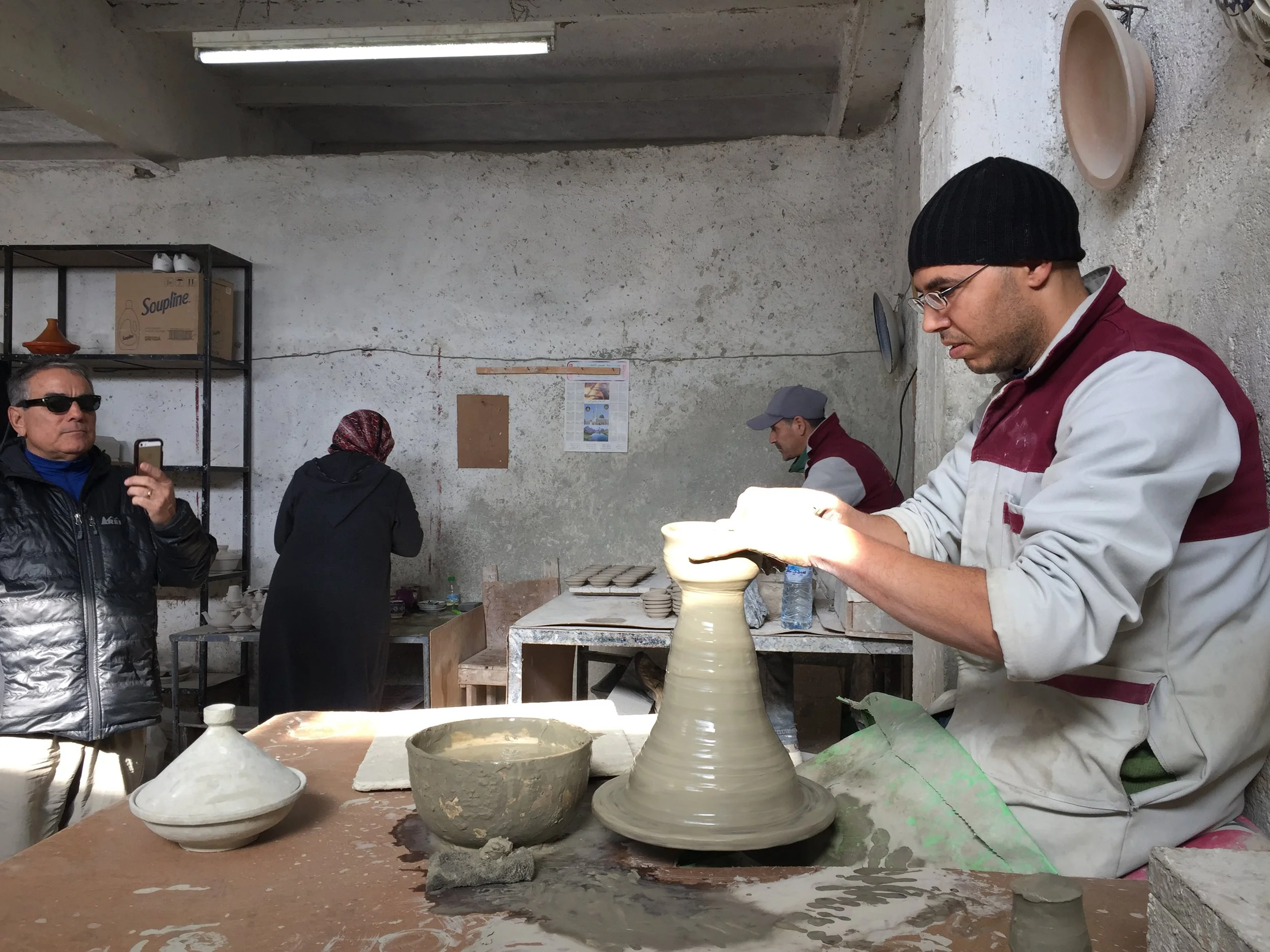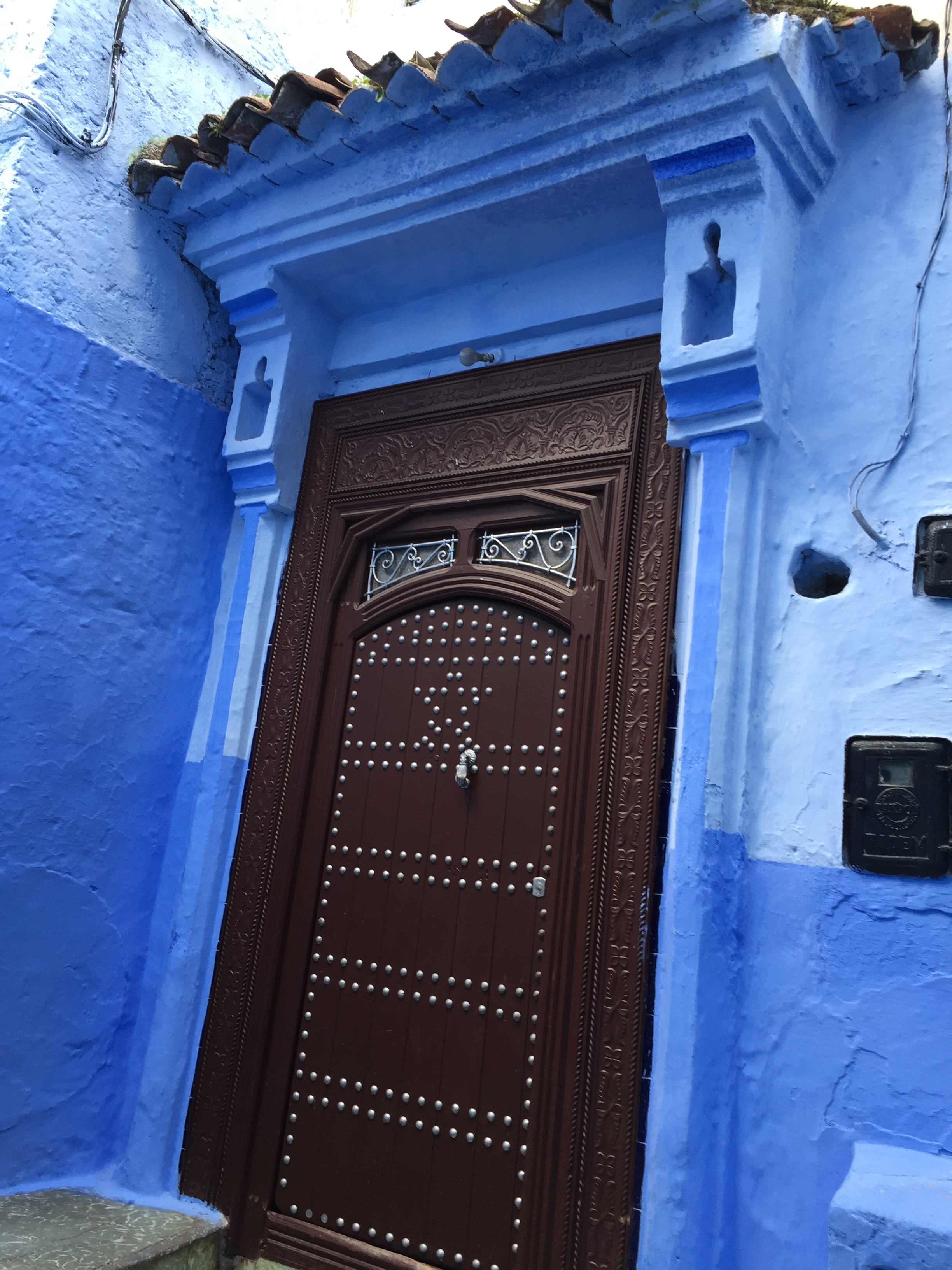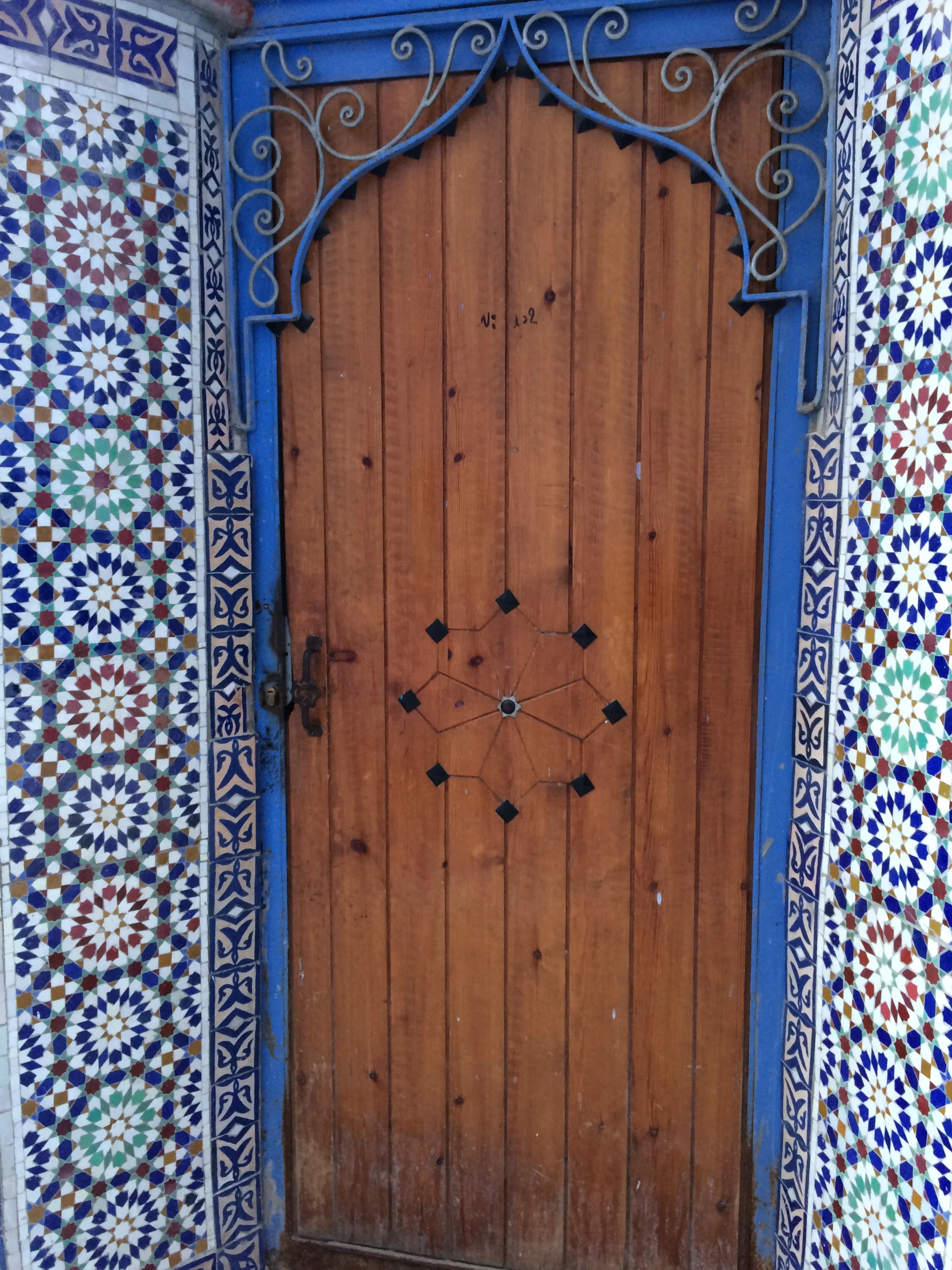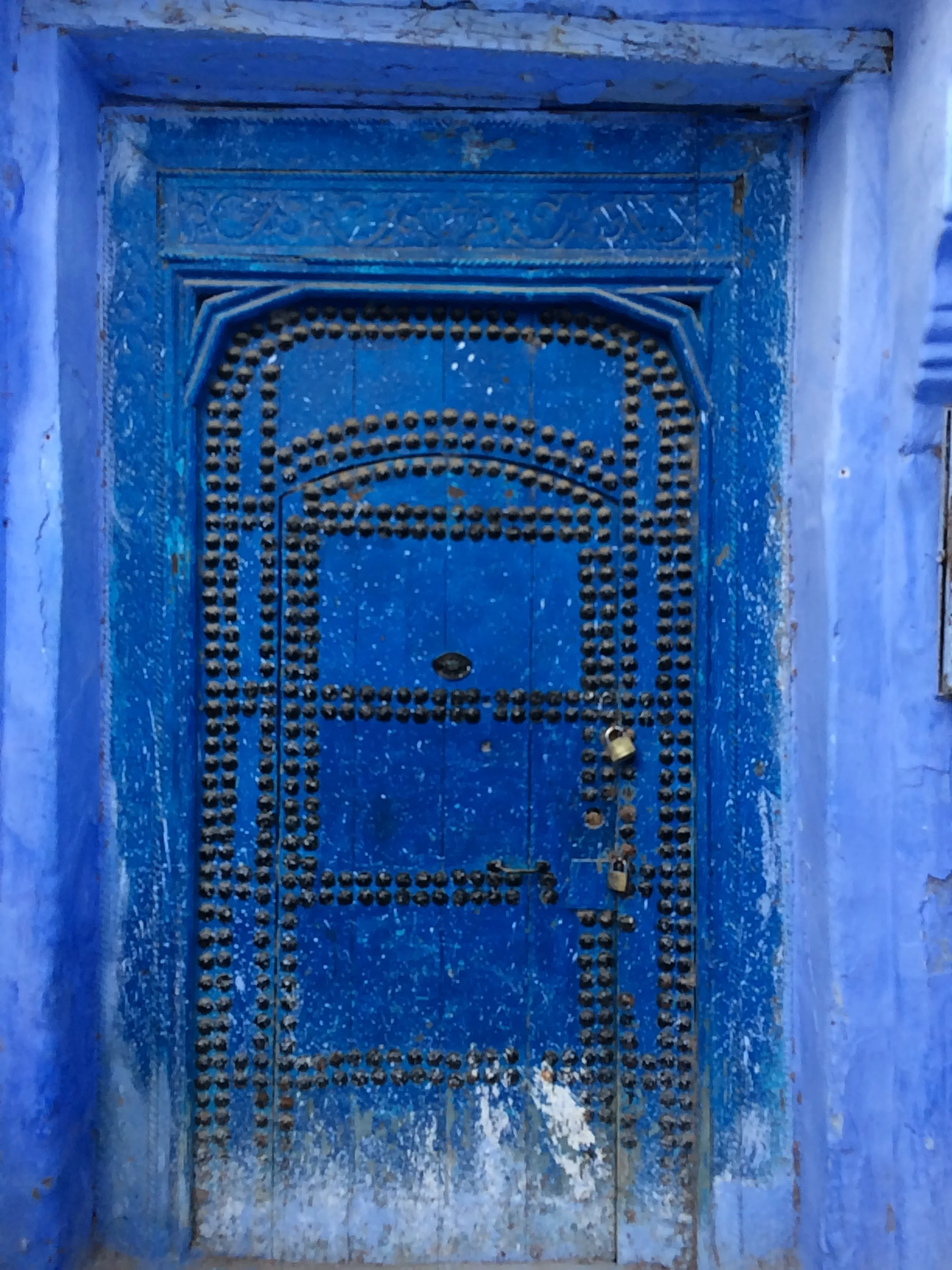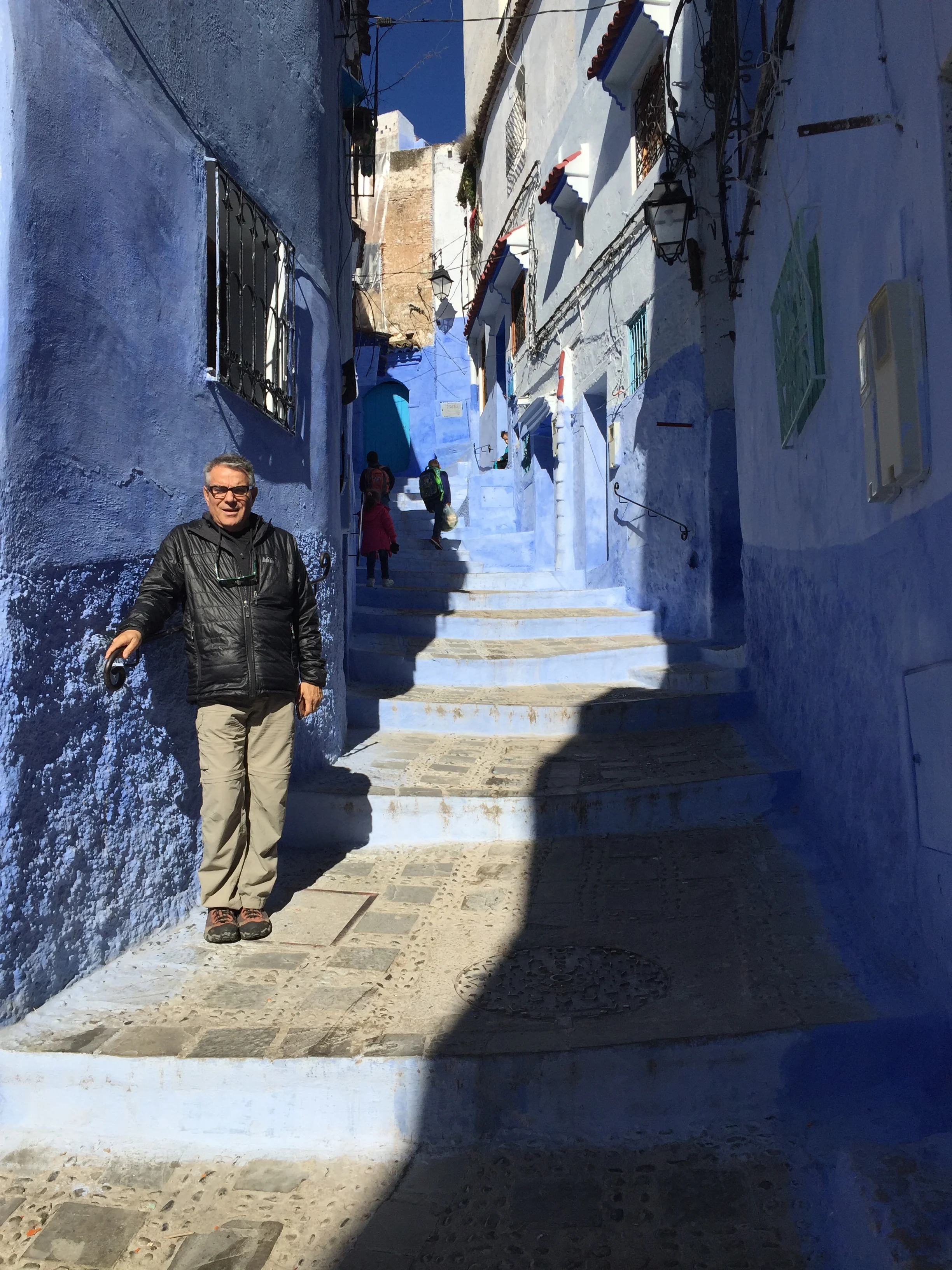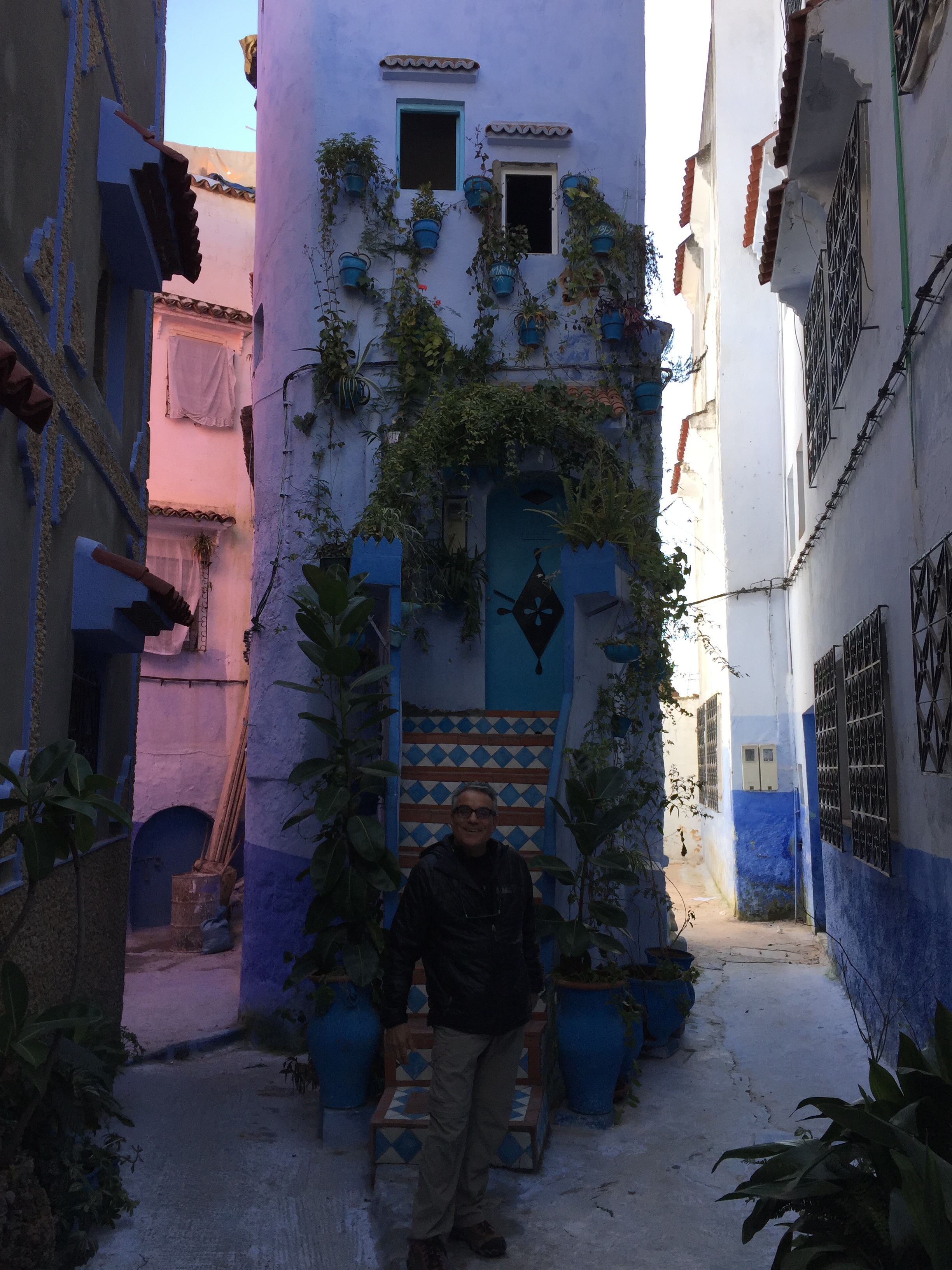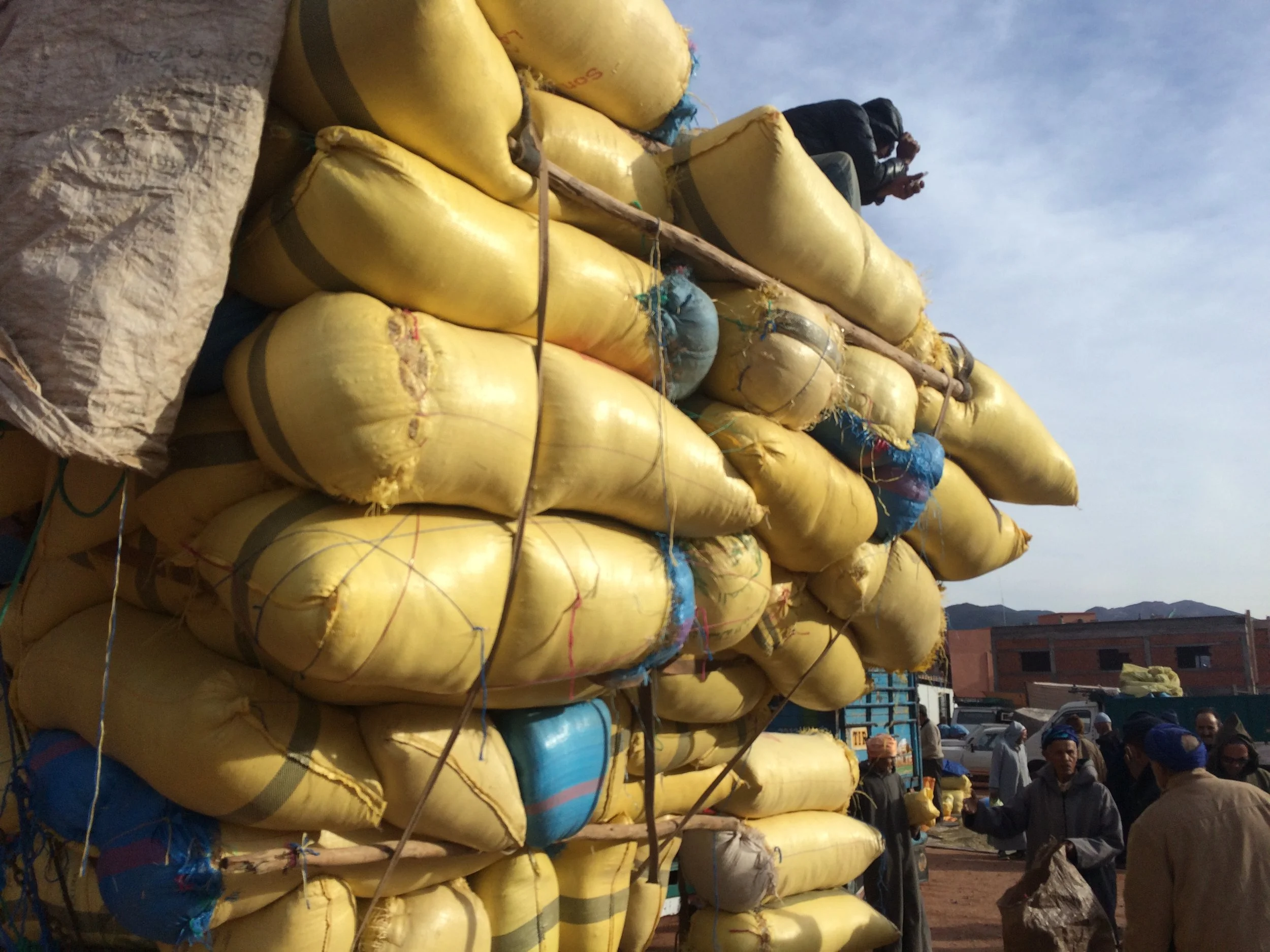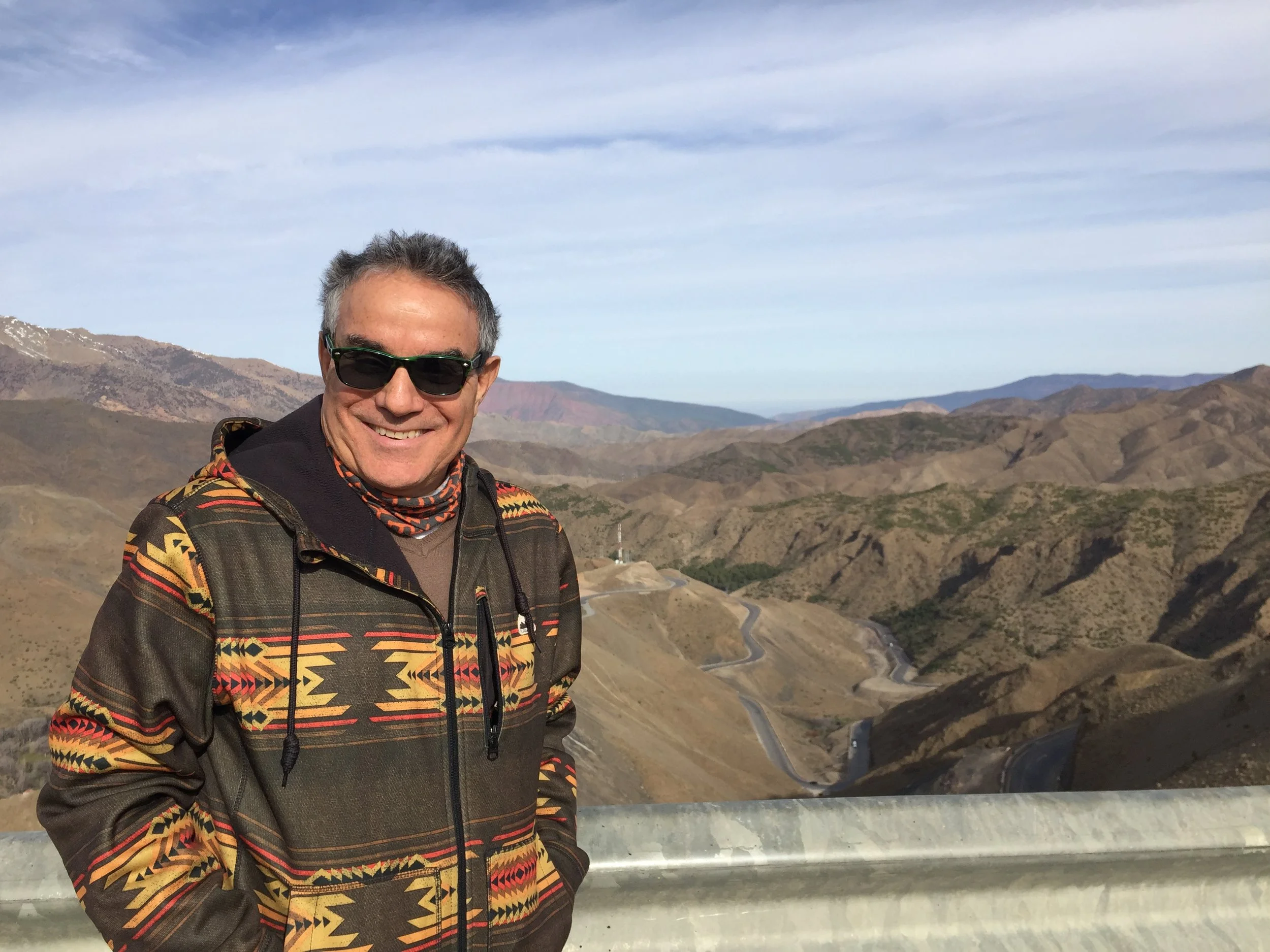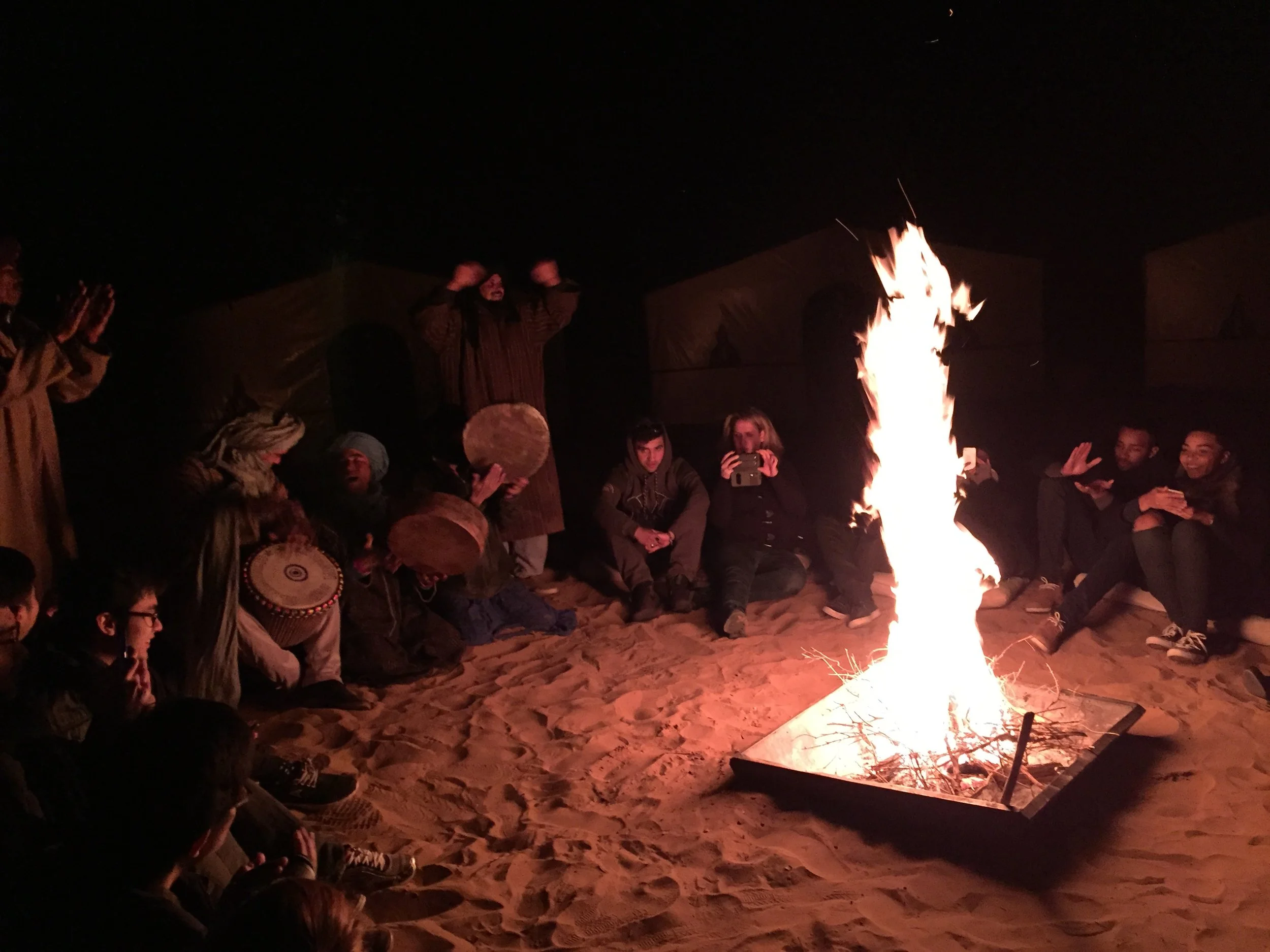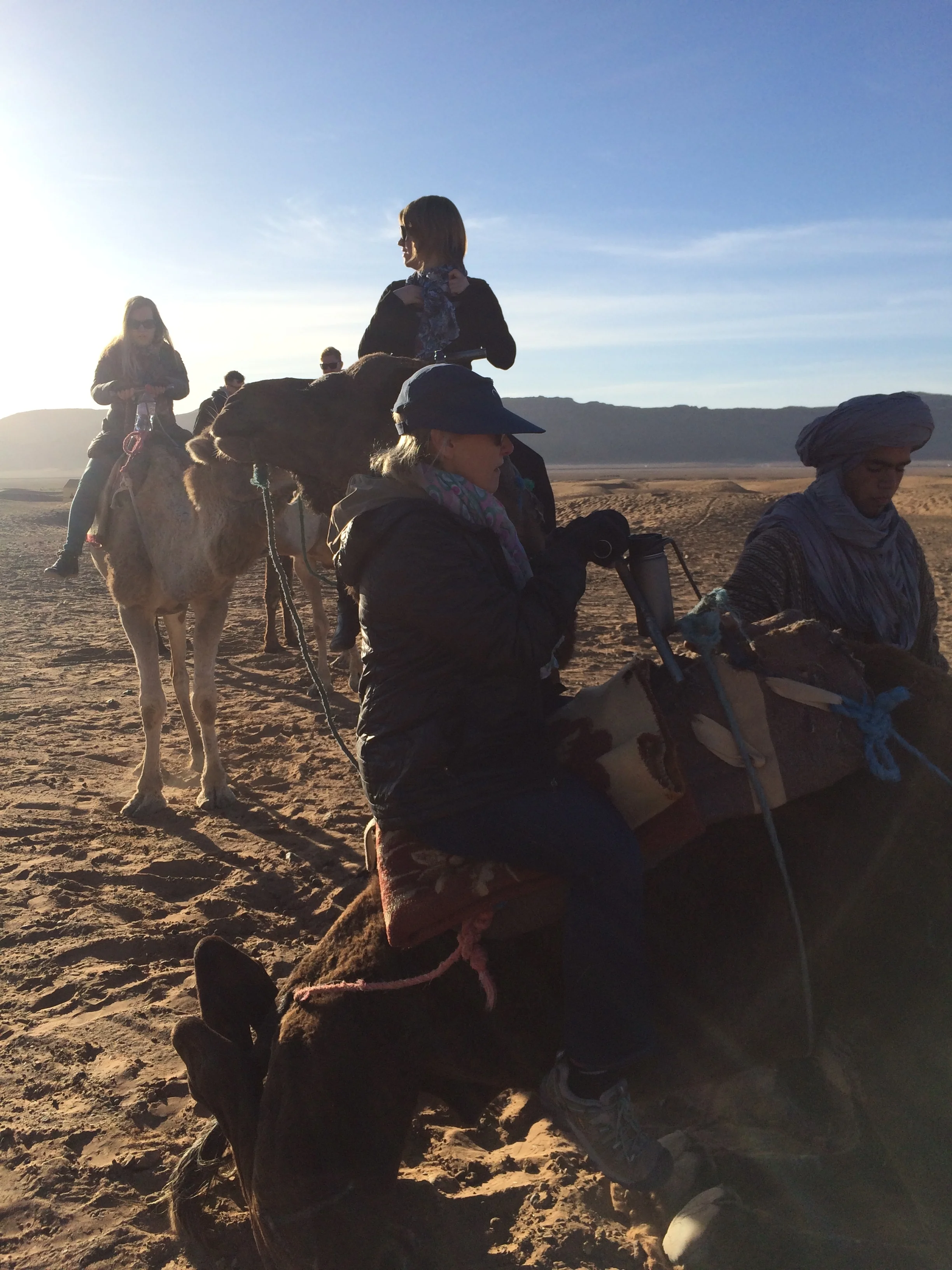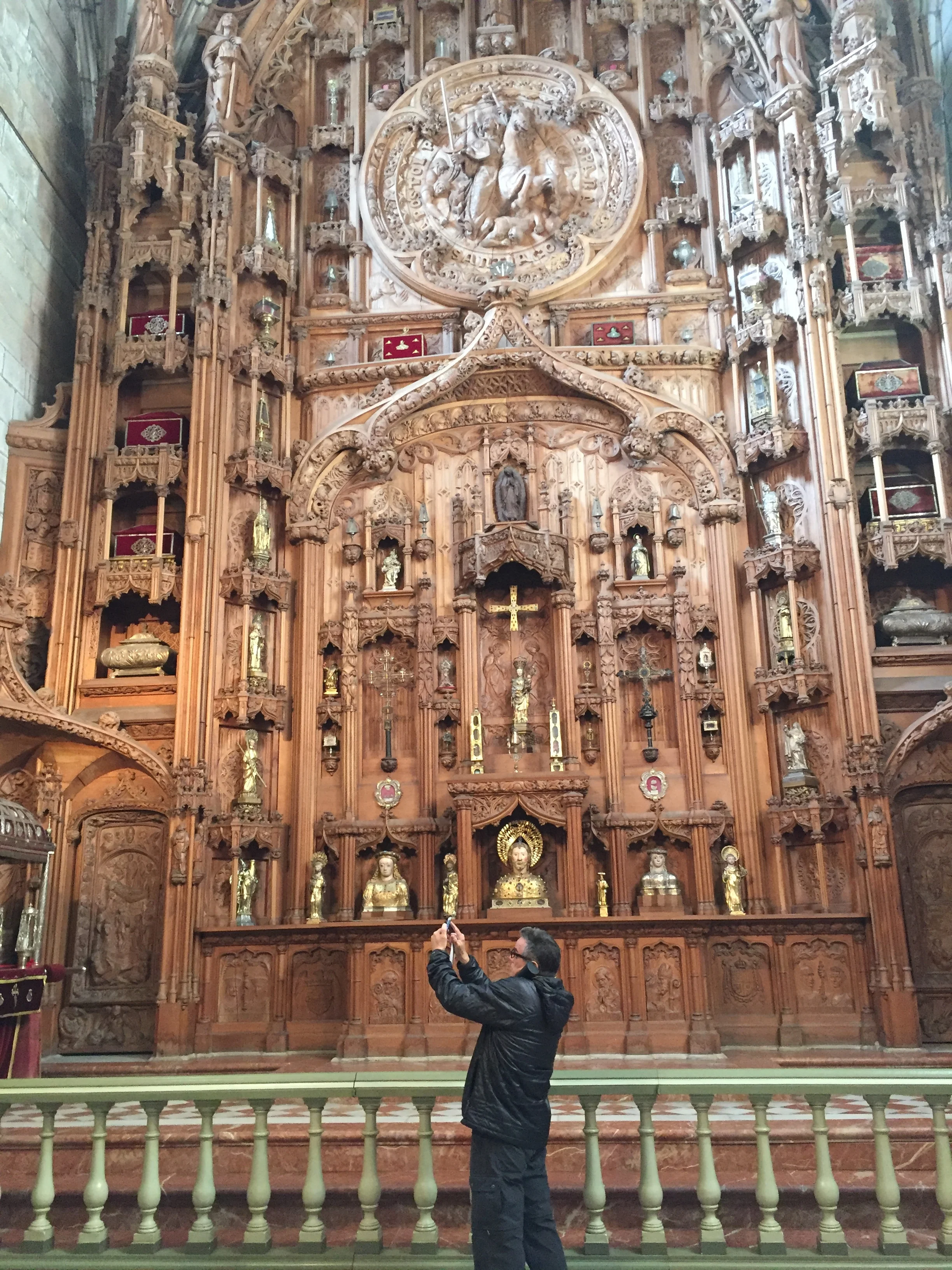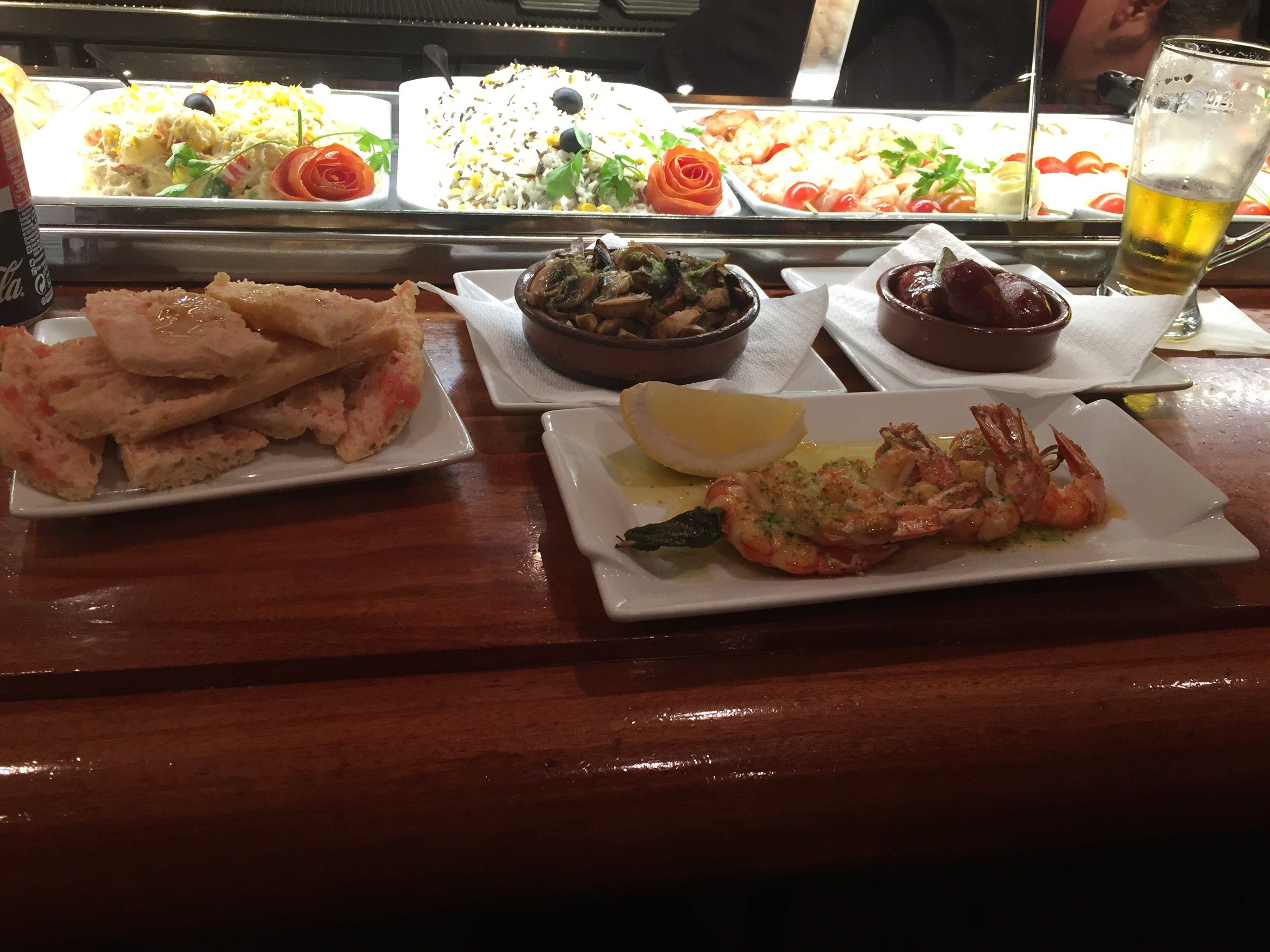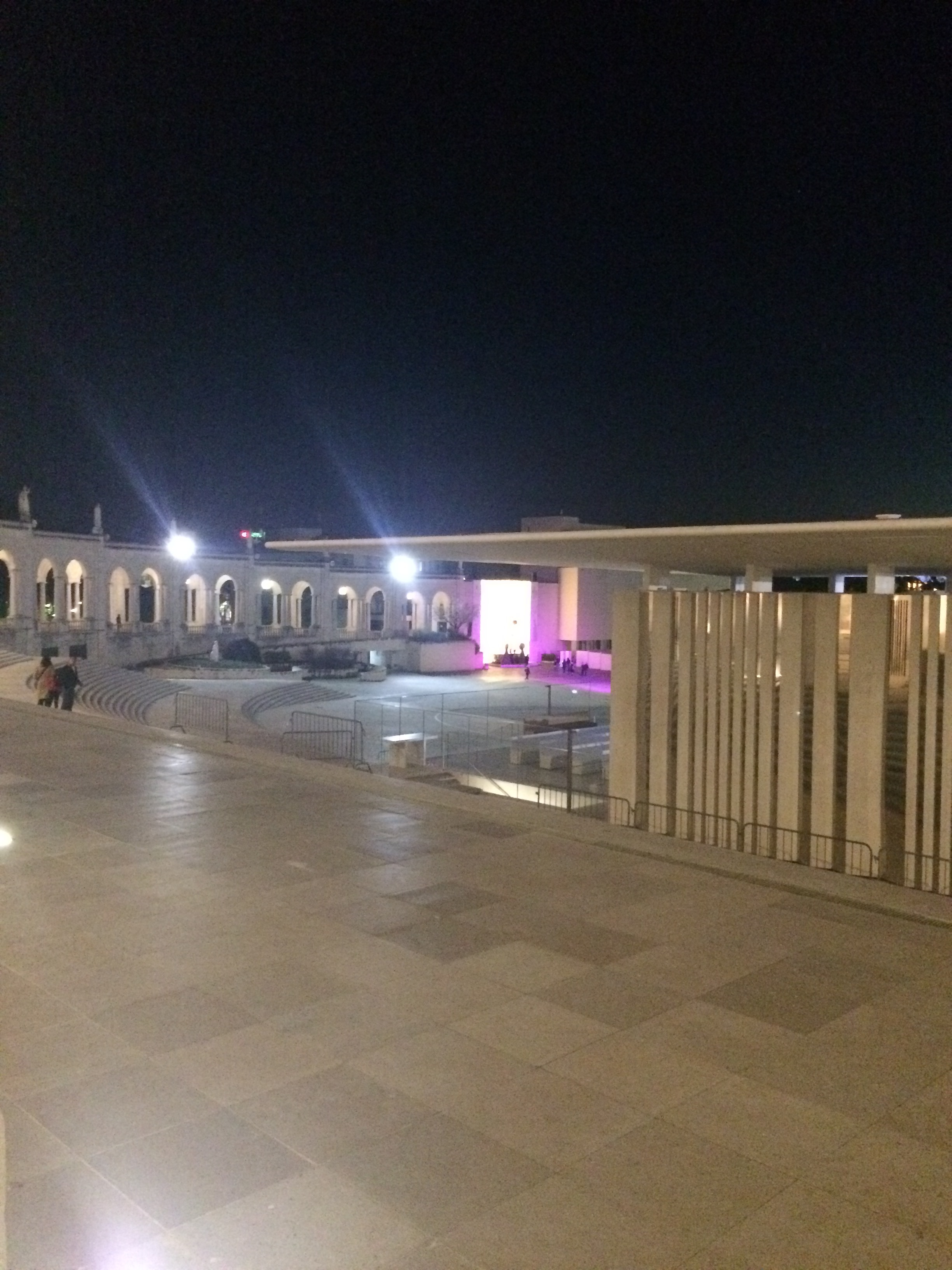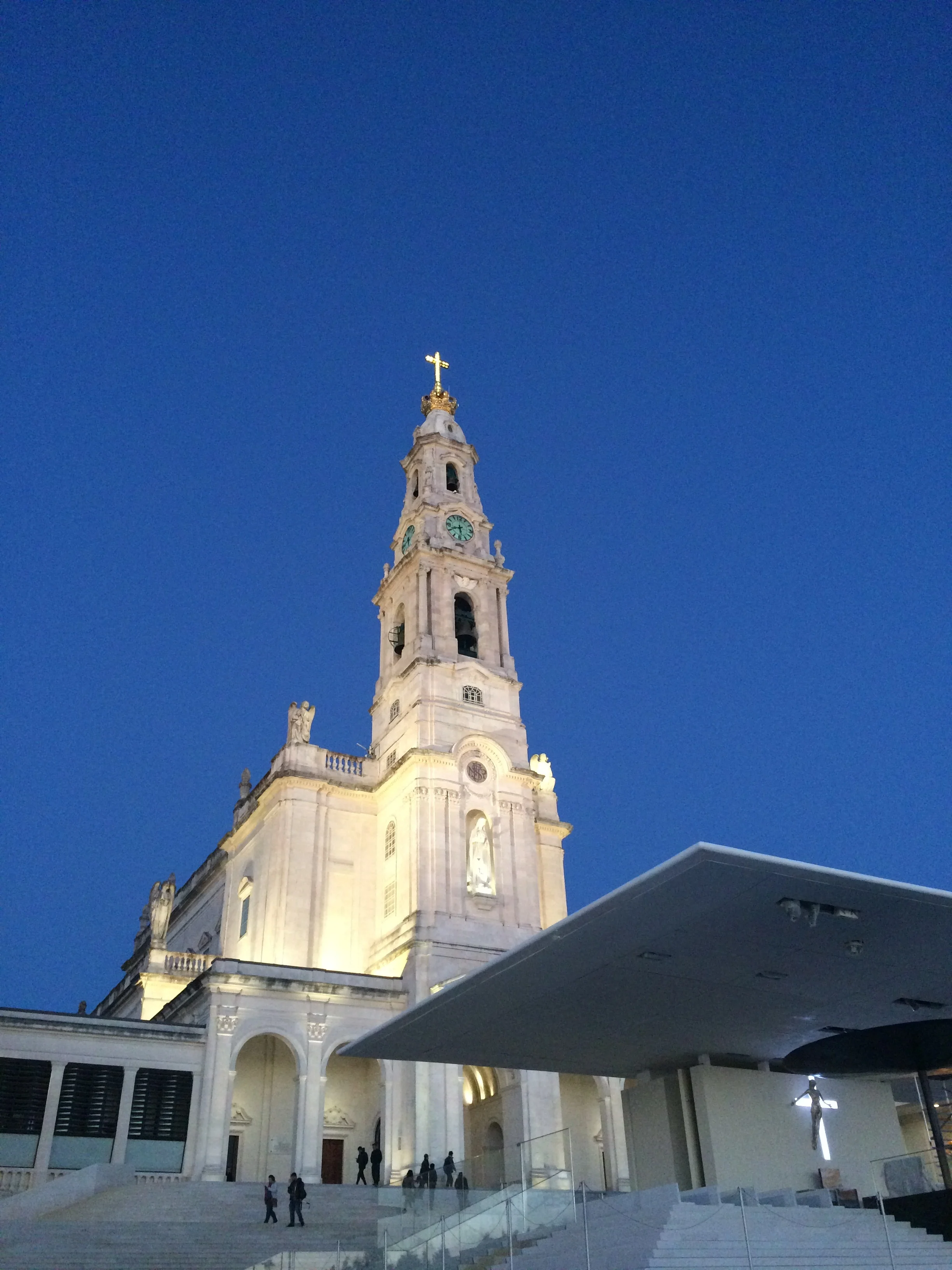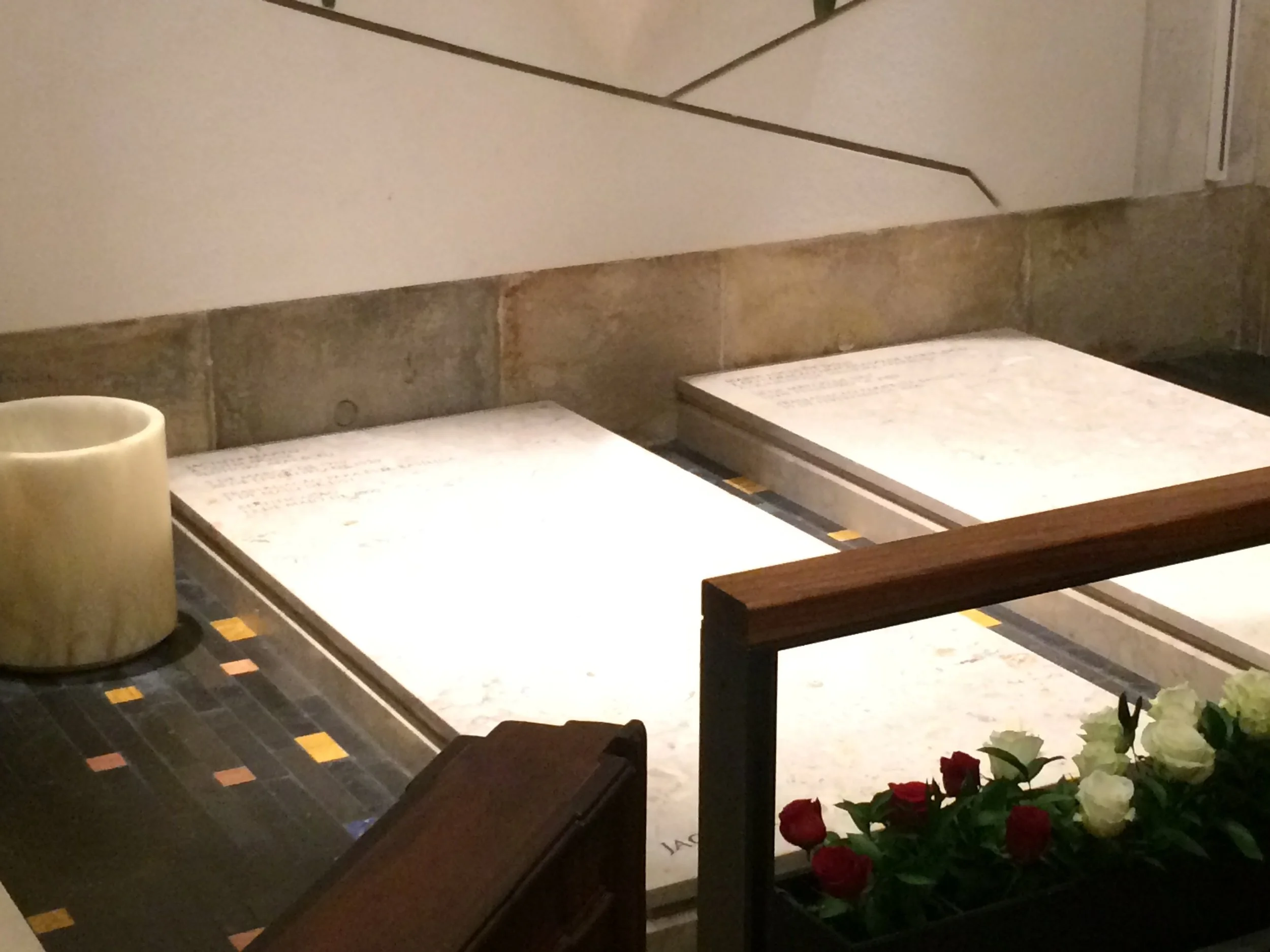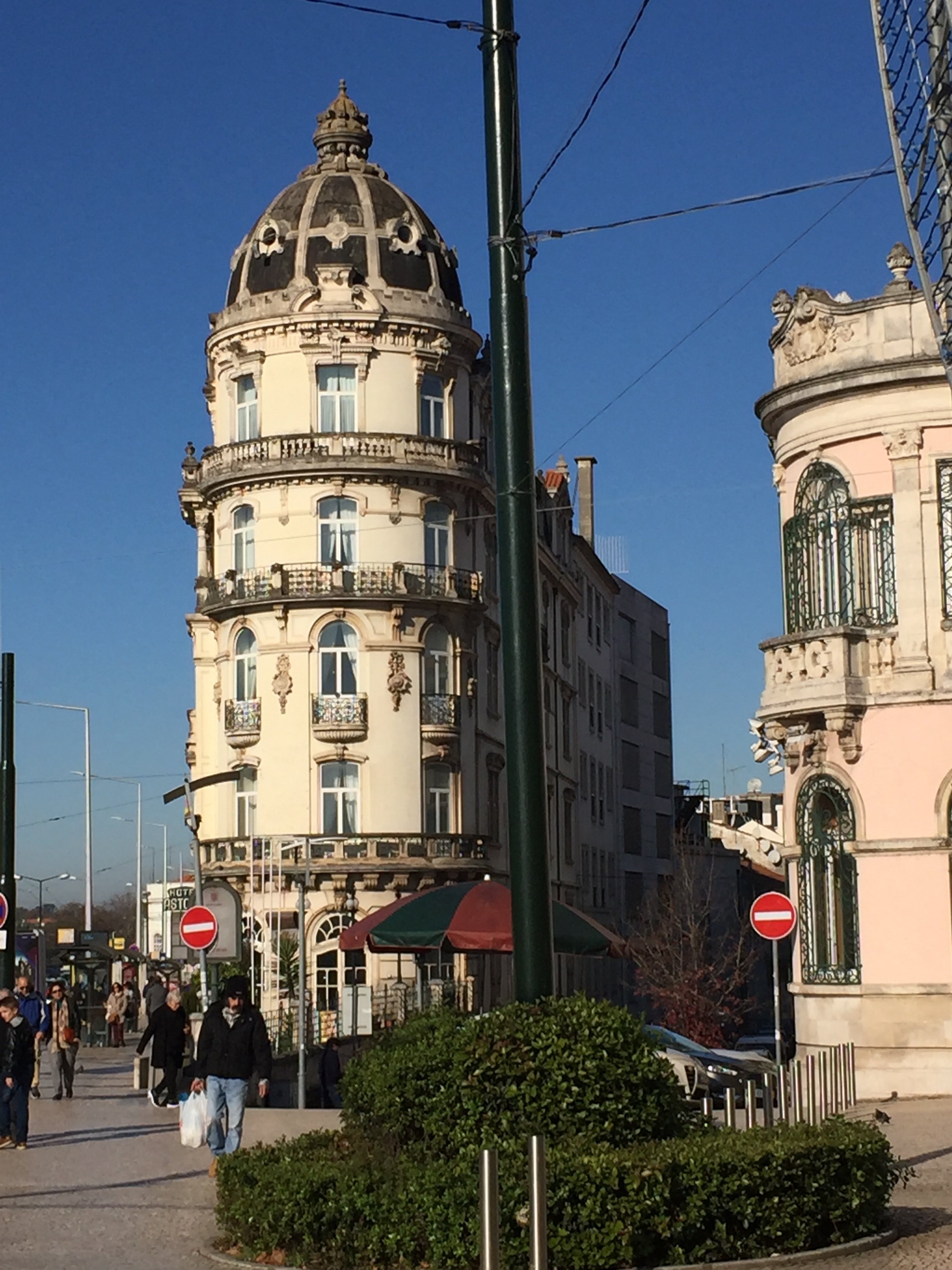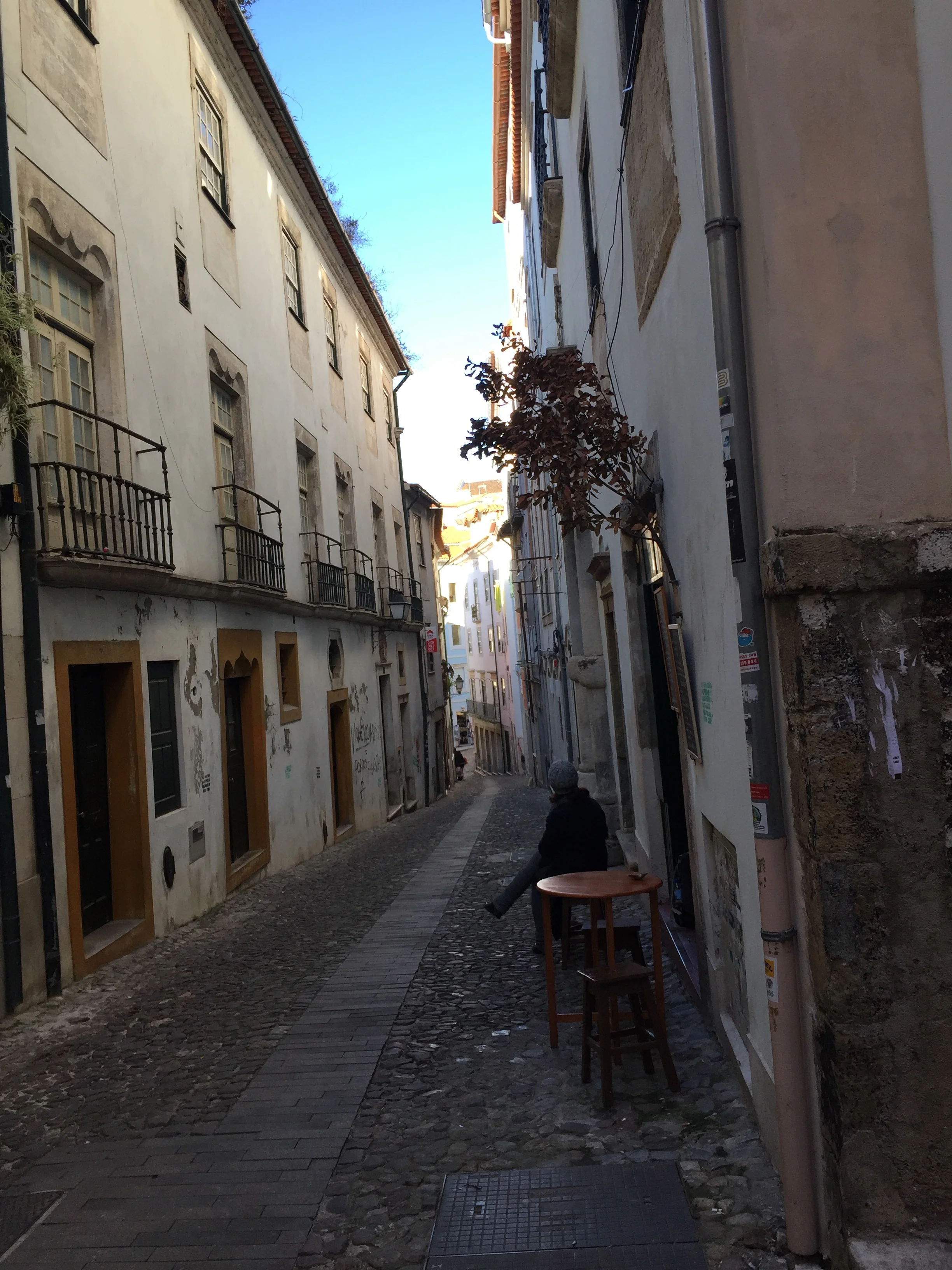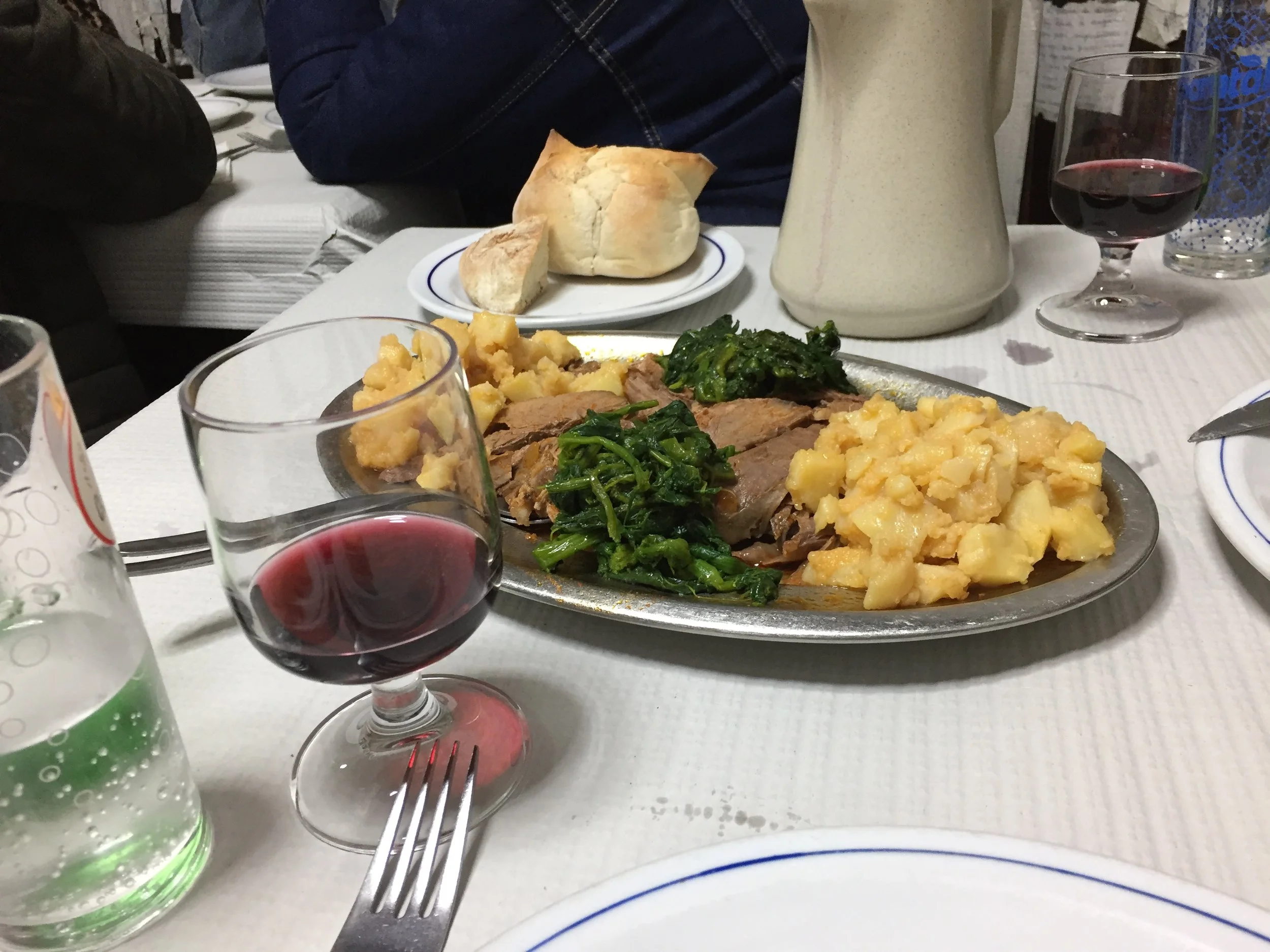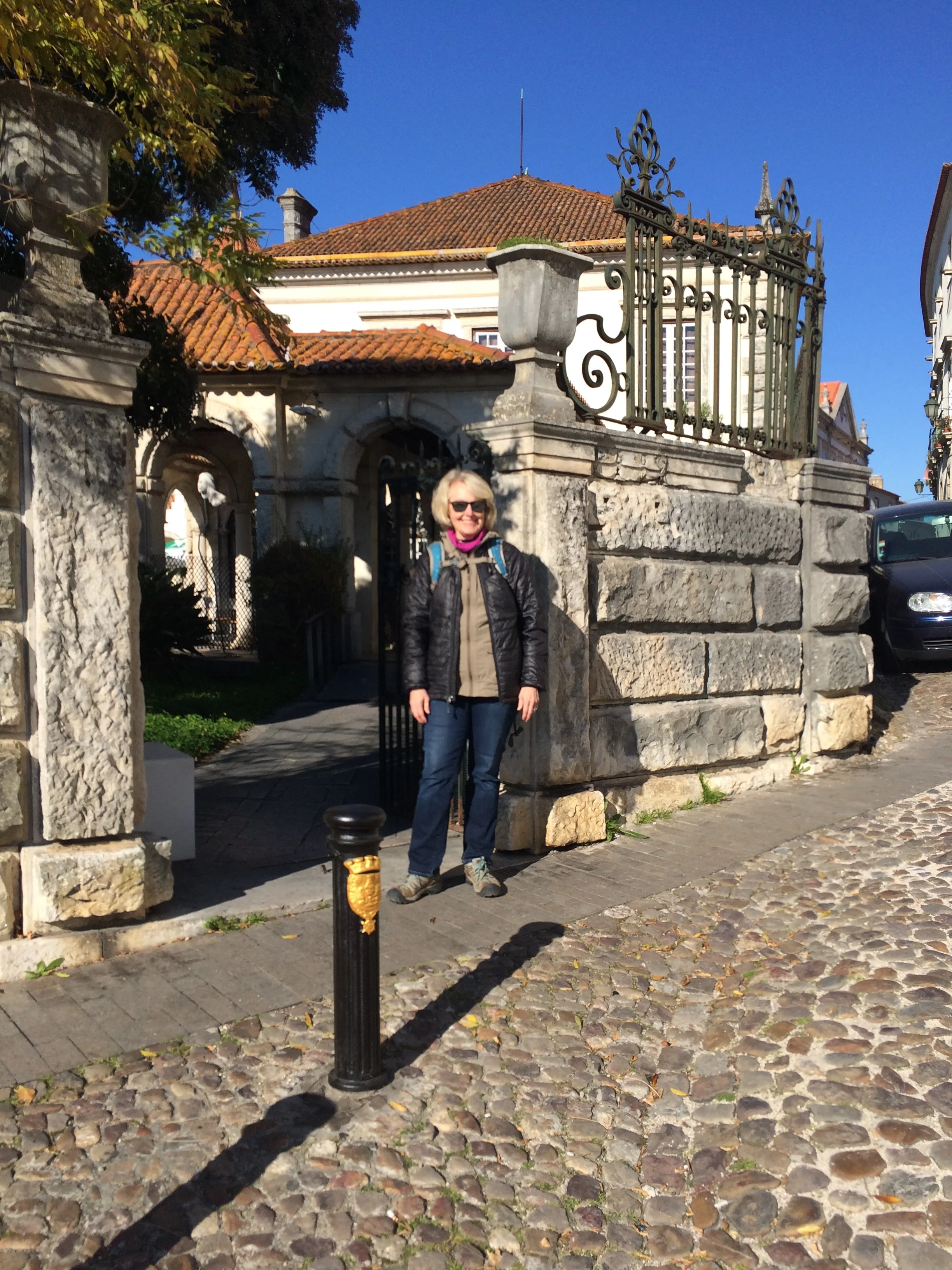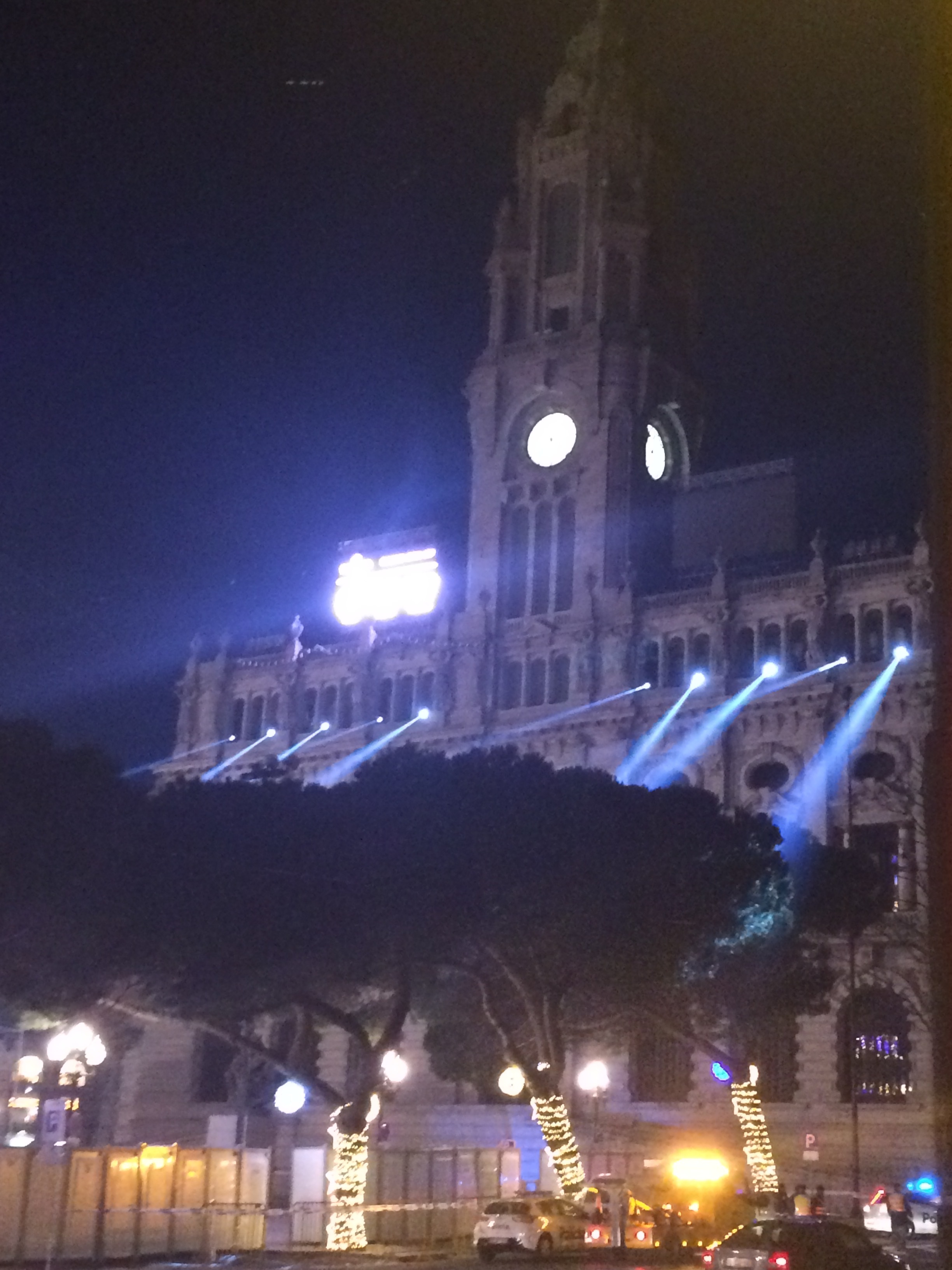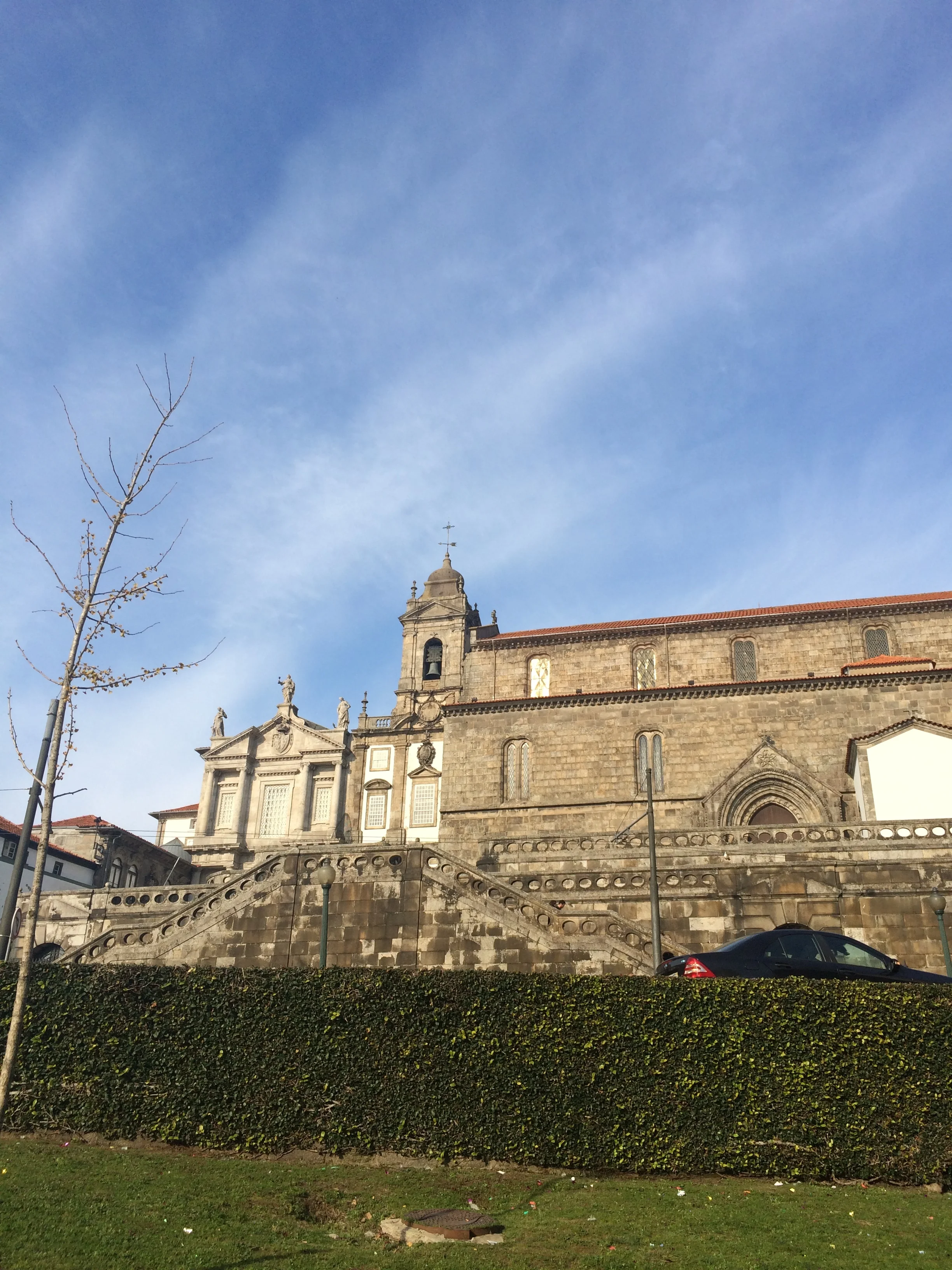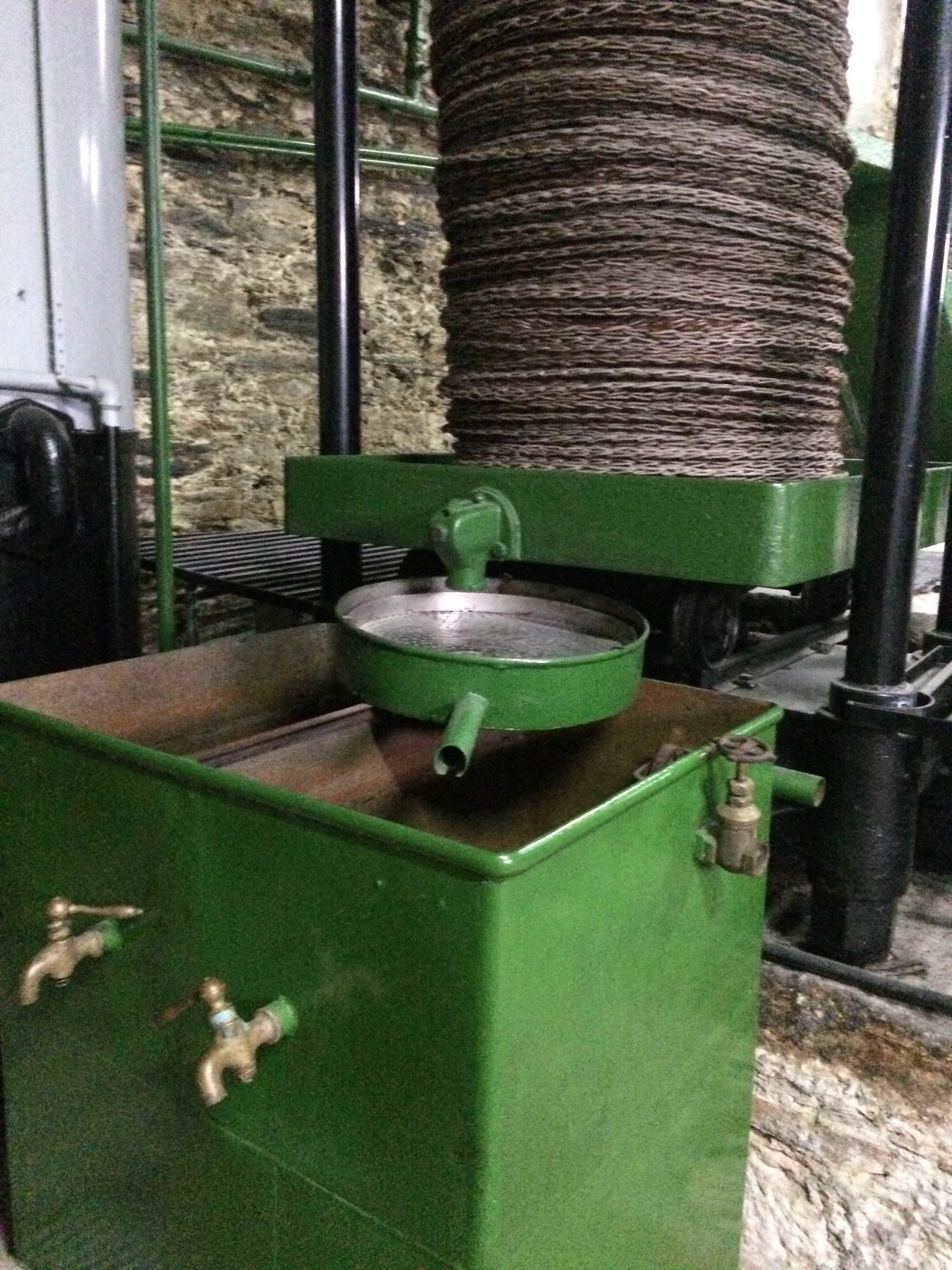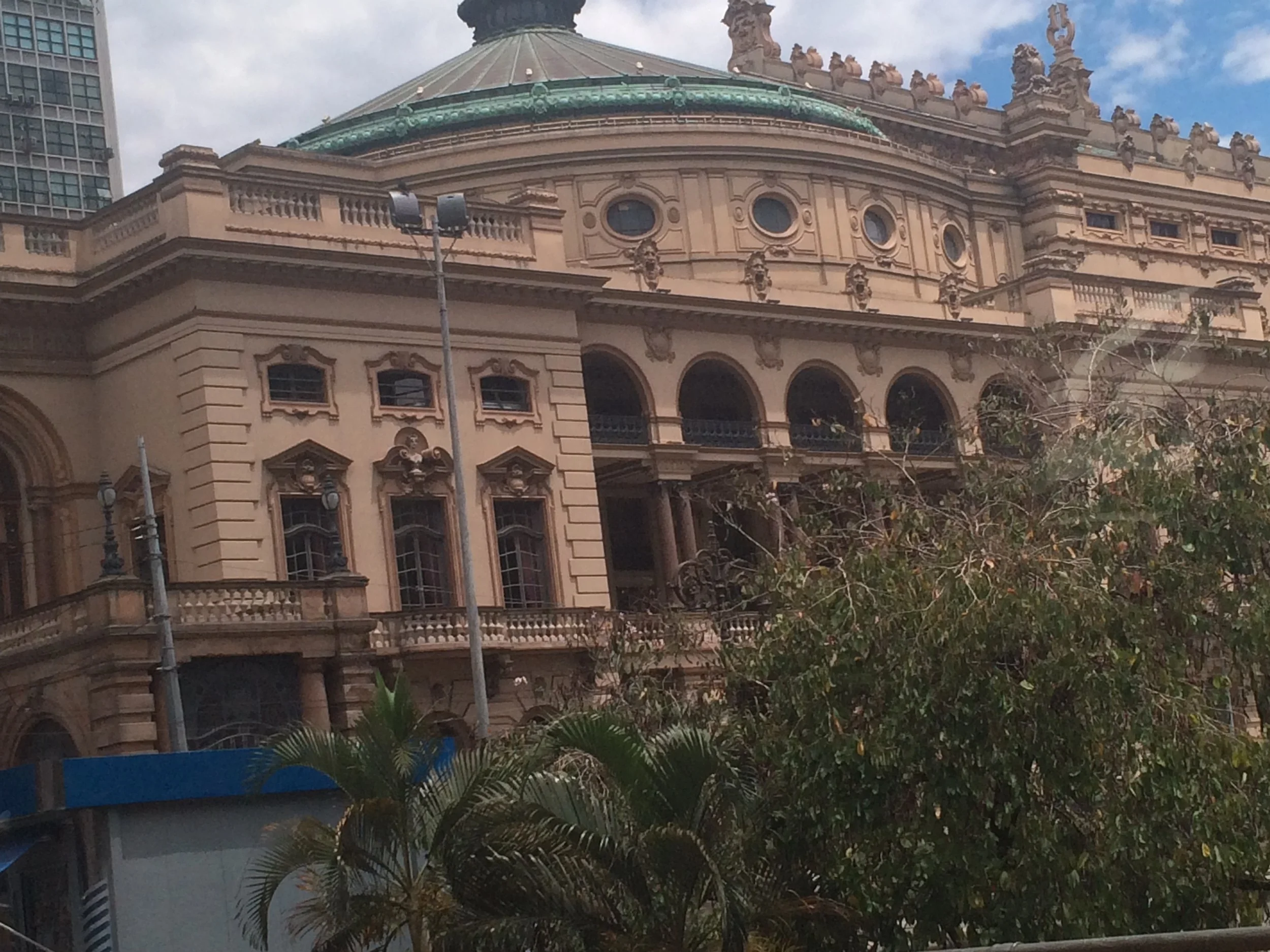After our runs up and down the dunes, we began our longdrive to Fez aka Fes, the third largest city in Morocco. The group were all cackling about the craziness of the the Sahara. We all felt this was part of the Moroccan experience that we would not forget. This was a good drive, people were happy and we had some additional stops that had unexpected charm. First, we stopped at a stone work shop. This bone dry area of Morocco was once under the sea and you can find many fossils of early animal life. We had actually stopped to see these figures on the earlier Jeep ride. This Shop cut large pieces of stone and then chiseled around the fossils to bring out these 3 dimensional figures for unique furniture and art pieces. We did not buy a piece, but as we write about this experience we rather regret not doing so.
Back on the road, we drive through a range of landscape, from dry, flat desert to rolling green hills with trees. As we drove, Janet brought out the the computer app game called “94”, like family feud, and the group was well entertained. This was a fun group.
We stop at one wooded area to feed the monkeys. They are large and fat from the food offerings, which they will take directly from your hands. These animals are far bigger than the monkeys we fed in the Amazon so many weeks ago. We drove a little further and stopped for coffee at the university town of Ifrane, which looked like a Bavarian city. One of the nearby resorts apparently hosted the first lady and her daughters. Another surprise, the city was still lite up with christmas lighting.
We finally arrived in Fes aka Fez late at night, but not to late to go out for a traditional dinner at a supper club with musicians, belly dancers, and audience amateurs. The amateurs were of course our fun loving group. Frank and friends gyrated with the belly dancer, and others in our group participated in a mock wedding ceremony where the brides were lifted to their shoulders. I think our fellow American, Matt from U of Chicago, might be wedded to 2 of our Australian gal pals, at least that was the joke of the evening. The food was good and entertainment amusing.
The nextmorning we met up with our local guide who instructed us on the King’s palace, one of 43 palaces, then thenorth fortress which faces the south fortress, and finally the Medina. The Medina is the ancient shopping district of the ancient Fez that still operates in full force today. With 10,000 narrow streets, mostly useable by hand carts only, that lead to different concentrations of products is a city of its own. Our group was ushered into factories and shops with such goods as, tanned leather, woven silks, painted pottery and mosaics, carved metal plates and pots and ornaments, some jewelry too.
The tannery we visited and smelled could not be forgotten. We were offered mint leaves to inhale as we stood on the roof overlooking the processing area. Men with rolled up pants or shorts stood in large vats of color, purportedly from natural plants, and submerged and flipped the animal skins. The odorous smells came mostly from the mixture of acidic pigeon excrement and fluids in which the skins were first placed to break down and soften the sinews of the hides. The assortment of finished products, such as coats, brief cases, suit cases , hats and belts, were impressive.
The tannery of Fez
The weavers shop was also very interesting, with 2 looms being operated for show. This shop sold table cloths, scarfs, and coats. We negotiated the purchase of 2 silk scarfs which will top off any of Janet’s wardrobes. As we walked we saw butchers stands with hanging meats, hine quarters and goats heads. Other vendors sold live snails, grains, dates and nuts, cakes. Wood workers made wedding stands where the Bride is lifted to shoulder height by her entourage.
That night our group again displayed their various purchases from this ancient shopping area that still operates at a fanatic pace every day.
We got up really early, 5:45 AM, to get to breakfast and then trek to the city of Chefchaouen, also known as the Blue City. The restaurant was kind of a mad house as a large Japanese tour group was leaving for another city. As with bigtours, you put your luggage outside the room door and the attendants move them to the bus. Our little group of 11 are quick moving. We sling or roll our own stuff into the back of our 15 space van and nestle in. That's what we did today as we drove to the Blue City, 4 hours away, joking about Matt’s wedding . The terrains is very different from the dry red sand of the south. Here it seems like Portugal, with criss cross colors of the field where produce grows. All the landscape is green. We passed a particularly pretty olive tree orchard of large bush trees in perfect rows surrounding a lovely Kasbar type home of pink walls.
As we then drove by the orchards of oranges, our guide had the bus stop and we all stepped out in the morning sun for a roadside snack of fresh large, beautiful oranges from a stand. Peal and eat with sticky juices running down our fingers; lick, lick ,munch munch. This was a nice unexpected treat. Our guide, Badr, was always doing little extra things that made the trip more memorable and fun. The night before he took some of us to a local eatery for moroccan fast food whichturned out to be the well known and much liked shawarma sandwich with fries and coke for $3 bucks. He also walked some of us to a small liquor shop to replenish beers and wine for our own pre dinner happy hour. Great guide, and very knowledgeable as he had studied economic geography at the university.
Chechaouen - The Blue City
The Blue City is a small but one of the most beautiful city in Morocco. Situated between two mountains it was a sanctuary for the jewish population that fled exile from ancient Spain along with the moors and is now a cosmopolitan city of Berbers, Arabs and Jews. Most all the buildings are painted a pale blue with white trim. From the distance the town glows bluish. In town other colors are evident but in the Medina, or traditional residential and market area, the walls have darker blue and light blue combinations. Impressive are the blue ornate doors of the residences. We walked through the Medina all the way to the ancient city wall overlooking the town and then coming down we were intrigued by a store that sold hand weaved rug. The proprietor was very accommodating and laid out 12 very large rugs of various colors and designs. We liked them, but not enough, and we were not inclined to pay $2000 or go through an intense negotiation. Later our guide advised that $800 was max.
In any event the experience was rather fun. As well, surprisingly, an American advertising crew was doing a fashion shoot in the Medina. The Moroccan helpers would whisper “these are Americans” In fact, the models were changing in the back room of the rug store. I'll have to check the names of these tall models at some point. We met our group, all displaying their purchases, then webussed up to another viewing point for photos. We agreed, this beautiful city was a highlight.
The below gallery is a sample of the beautiful doors of the Blue City
We drove back to Fez and went to a Moroccan fast food for grilled hamburgers in pita bread. Another surprise, the couple sitting next to us had just arrived from Warren, MI. They were visiting the wife's mother. This reunion of Michiganders was rather fun. Next stop Rabat.



